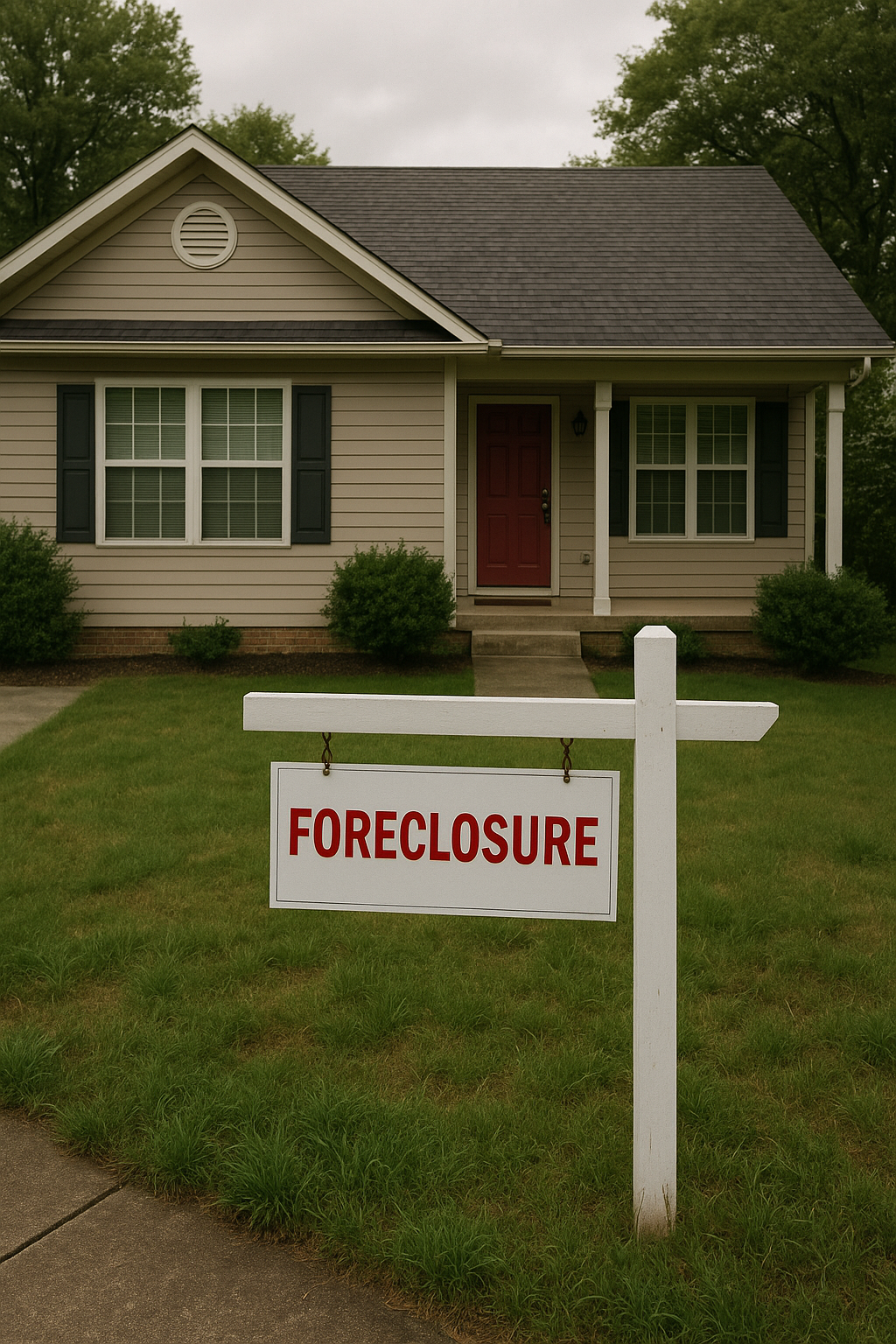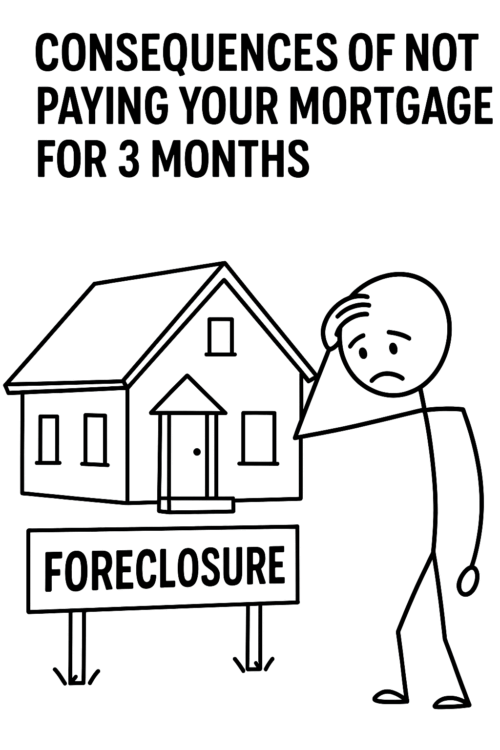In Ontario, lenders rarely use true foreclosure. The standard route is power of sale, a faster process that lets the lender sell the property to recover the debt. A simple way to picture the journey:
-
Default happens (missed payments, unpaid taxes, or other mortgage breaches).
-
After 15 days in default, the lender can issue a Notice of Sale.
-
You get a minimum 35-day redemption window to fix the problem.
-
If you don’t, the lender can take possession and list the property for sale.
-
Proceeds pay debts and costs; any surplus goes back to you. If there’s a shortfall, the lender can pursue the deficiency.
Now let’s unpack each step in plain English—with a practical playbook to keep options on your side.
Table of Contents
Toggle“Foreclosure” vs. “Power of Sale”: What Ontario Actually Uses
When people search “foreclosure timeline Ontario,” they usually mean “What happens if I fall behind on my mortgage?” In Ontario, the answer is almost always power of sale, not foreclosure. Here’s the difference:
-
Power of sale: The lender sells your home to recover what’s owed. After debts and costs are paid, surplus funds go back to you. If the sale doesn’t fully cover the debt, the lender can pursue you for the shortfall (the deficiency).
-
Foreclosure (the uncommon path): The lender asks the court to transfer title to the lender. It’s slower, more court-driven, and if granted, you lose any equity upside because the lender becomes the owner.
Most lenders prefer power of sale because it’s quicker and more predictable. For homeowners, that speed cuts both ways—you have less time to stall, but you do have a clear window to reinstate or redeem before the house is listed.
The Ontario Power-of-Sale Timeline (Start to Finish)
Typical duration: If you don’t cure the default, many files wrap up in roughly 3–6 months from the first missed payment. That said, timelines vary with service of notices, court availability (for possession), market conditions, and negotiation.
Step 1: A Default Occurs (Day 1+)
What triggers it: The most common trigger is missed mortgage payments, but other breaches can count, like unpaid property taxes, lapsed insurance, or breaking a covenant in your mortgage agreement.
What lenders do: Some will call or email to nudge you; others move straight to formal steps. They’re not obligated to offer flexibility, but many will discuss payment plans if you engage them early.
Your best moves now:
-
Contact your lender quickly and ask about repayment plans, a temporary interest-only period, or a skip-a-payment option (if available).
-
Loop in a mortgage professional to explore a refinance, top-up, or private solution.
-
Prioritize property taxes and insurance. These are high-priority costs that can escalate enforcement.
Step 2: Notice of Sale (Earliest at Day 15 of Default)
After you’re in default for roughly 15 days, the lender can issue a Notice of Sale. This is the formal “heads-up” that the clock is starting. It must be served on you and anyone else with an interest (e.g., a spouse with rights, second mortgagees, lienholders).
What the notice means:
-
It spells out the amount needed to reinstate (catch up) or redeem (pay off) and starts the redemption window.
-
You’ll see deadlines and who was served. Read it carefully—deadlines are strict.
Your best moves now:
-
Open every letter and save envelopes (postmarks can matter).
-
Request an arrears/payoff statement right away so you know exactly what to pay to halt the process.
-
Start financing conversations immediately—A-lender if you’re near renewal and still qualify, B-lender if credit/income is marginal, or private (first or second) if speed is critical.
Step 3: The Redemption Period (Minimum 35 Days After Notice)
This is your window to act. Following the Notice of Sale, there’s a minimum 35-day waiting period before the lender can proceed to listing and sale activities. (In practice, some files add a few days for mailing/service.)
During this period you can:
-
Reinstate: Bring the arrears + costs current and return to normal payments.
-
Redeem: Pay the entire balance and end the mortgage.
-
Refinance: Swap into a new mortgage (A, B, or private) to clear the arrears and costs.
-
Sell on your own to capture more equity and control the market strategy.
Pro tip: Treat this window like an emergency countdown. Every day you save now can mean thousands of dollars in equity later.
Step 4: If Default Continues — Possession & Listing
If you don’t cure the default within the redemption period, the lender typically moves to take possession (often via a court order) and then lists the property for sale under the power-of-sale clause.
What this stage looks like:
-
A property manager or locksmith may attend to change locks.
-
The property is cleaned, secured, and listed with a real estate brokerage.
-
Showings start and the lender (through its representatives) considers offers.
Your options now:
-
There may still be a short window to refinance or sell privately if you can act fast and the lender hasn’t locked the plan.
-
Negotiate—in select cases, lenders may consider brief extensions if you provide proof of an imminent payout (firm lender commitment, lawyer’s undertakings, etc.). Not guaranteed, but worth asking.
Step 5: Sale Closing & Where the Money Goes
When the property sells, the proceeds are applied in order: enforcement/legal costs, realtor fees, tax/insurance advances, principal and interest, and any subordinate liens. After those are paid, surplus funds go back to you.
Deficiency risk: If the sale price doesn’t cover everything, you’re on the hook for the shortfall (the deficiency). Lenders can pursue collection or sue for the balance. This is one big reason to act early—minimizing time and costs can reduce the risk of a painful shortfall.
How Long Does Power of Sale Take?
-
If you act fast: You can stop the process within the 35-day window, sometimes sooner, by reinstating, redeeming, refinancing, or selling.
-
If you don’t: A typical file can wrap up in ~4–6 months from first default, though that varies with service issues, court scheduling (for possession), and days on market.
-
Foreclosure (rare in Ontario): Court-driven and often 12+ months—another reason lenders prefer power of sale.
A Simple Comparison: Power of Sale vs. Foreclosure
| Feature | Power of Sale (Ontario) | Foreclosure (Uncommon in ON) |
|---|---|---|
| Who sells the home | Lender sells under mortgage terms | Court transfers title to lender |
| Typical speed | Faster (months) | Slower (often 12+ months) |
| Your equity | Surplus after debts/costs returns to you | You don’t share in upside after title transfer |
| Deficiency (shortfall) | Lender can pursue you for any shortfall | Generally no deficiency after true foreclosure order |
What Can Delay or Derail the Timeline?
-
Service mistakes: If notices aren’t served correctly, the lender may need to re-serve, adding time.
-
Court backlogs: Possession orders and evictions can take longer during busy periods.
-
Market softness: Fewer buyers or longer DOM (days on market) can slow sale timelines and affect price.
-
Bankruptcy or special statutes: Insolvency filings or other legal protections (where applicable) may pause or complicate enforcement.
Homeowner Playbook: What To Do at Each Stage
Days 1–15 (first missed payment):
-
Call your lender and be honest. Ask about a catch-up plan or short-term relief.
-
Cut non-essentials and stay current on taxes/insurance.
-
Call a mortgage broker to map your options (A, B, private; first vs. second mortgage).
When the Notice of Sale arrives (earliest ~Day 15):
-
Read every line and calendar your 35-day redemption date.
-
Request an arrears statement to know the exact reinstatement amount.
-
Gather documents for a refinance (ID, income, property tax statement, mortgage statement, insurance).
-
If equity is strong, consider listing quickly to sell on your terms.
During the 35-day redemption window:
-
Lock financing (commitment letter in hand beats “we’re working on it”).
-
Negotiate—ask the lender’s lawyer about timelines if you have a near-term payout.
-
Document everything—emails, phone calls, funds proof.
-
Move decisively—a day or two can be the difference between a private sale and a lender sale.
After the window, before/at possession:
-
Last-minute solutions: a private take-out with funded closing in days, or a firm purchase ready to close.
-
Legal review: Have a lawyer confirm service and process; procedural issues can buy time.
After a lender sale (if a deficiency remains):
-
Check the accounting (fees, interest, adjustments).
-
Discuss settlements or structured payment plans.
-
If the shortfall is unmanageable, talk to a licensed insolvency trustee or lawyer about your options.
FAQs: Ontario Power of Sale & “Foreclosure”
1) How many payments can I miss before things get serious?
There isn’t a magic number. A lender can move to a Notice of Sale once you’ve been in default for about two weeks. Some give grace; many don’t.
2) How long is my redemption window?
At least 35 days from proper service of the Notice of Sale. Treat that as your rescue clock: reinstate, redeem, refinance, or sell.
3) Can the lender keep my equity?
Under Power of Sale, any surplus after debts and costs returns to you. Under a true foreclosure (rare here), the lender gets title, and you don’t participate in upside after that.
4) What if the sale price doesn’t cover the mortgage?
That’s a deficiency (shortfall). In Ontario, the lender can pursue you for it. Minimizing delays and costs can reduce the amount.
5) Will a consumer proposal or bankruptcy stop everything?
It can change the dynamics and may pause certain actions, but it’s not a one-size-fits-all solution. Get legal and insolvency advice before deciding.
6) Do I need a lawyer?
Yes—especially once the Notice of Sale is served. A real estate lawyer can confirm deadlines, services, and negotiate with the lender’s lawyer.
7) Is a Power of Sale always faster than foreclosure?
Almost always. That’s why lenders prefer it. Faster doesn’t mean “tomorrow,” but it does mean the clock is ticking.
Getting collection calls? Notice of Sale on the way? You still have options. We help Ontario homeowners reinstate, refinance, or sell before costs snowball. Reach out for a no-pressure, quick assessment—we’ll map your numbers, deadlines, and best-fit solutions so you keep as much equity as possible.
Important Note
This guide is general information about common Ontario mortgage-enforcement steps. It’s not legal advice. Every file is different—please consult an Ontario real estate lawyer about your specific situation, service of notices, and deadlines.
- The Critical Consequences of Not Paying Your Mortgage for 3 Months - November 21, 2025
- The Critical Differences Between a HELOC and a Home Equity Loan Every Canadian Homeowner Must Know - November 19, 2025
- How to Get a Personal Loan Secured by Home in Canada in 2025 - November 17, 2025






